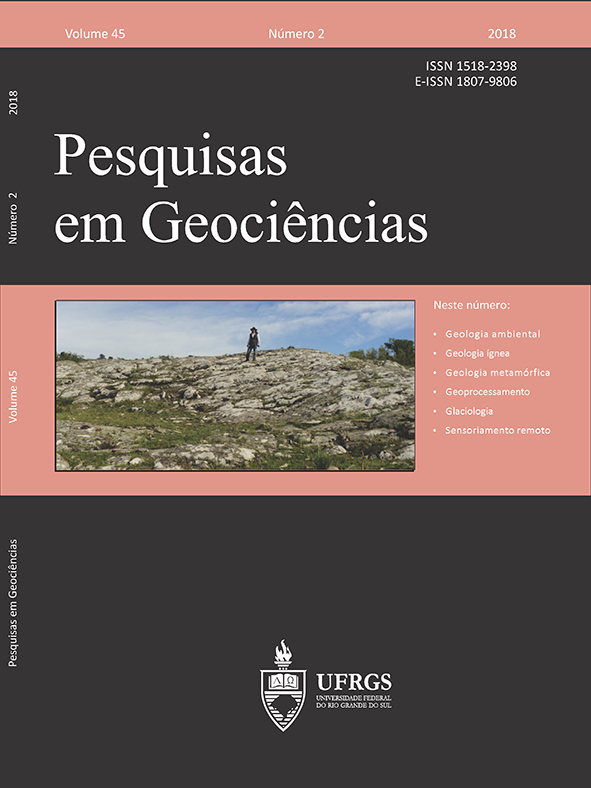Mafic magmatism associated with Encruzilhada do Sul Granite, RS: implications for the geration of the post-collisional granitc magmatism of the Dom Feliciano Belt
DOI:
https://doi.org/10.22456/1807-9806.88648Keywords:
Cinturão Dom Feliciano, Batólito Pelotas, Suíte Encruzilhada do Sul, magmatismo tholeiítico pós-colisional, granito tipo-A, mistura de magmasAbstract
The integration of geological mapping with petrographic and geochemical studies allowed the characterization of petrological evolution of the Encruzilhada do Sul Granite (ESG). This pluton occurs in the northern part of the Pelotas Batholith, eastern portion of the Dom Feliciano Belt. In the interior of the ESG small bodies of diorites and zones rich in mafic enclaves occur, representing an interaction of physical mixture between the acid and basic magmas. Granite facies with high content of mafic minerals and intermediate to acid composition are interpreted as hybrid rocks and related to the chemical mixture between the magmas. Based on the geochemical data, it is possible to define that mafic magmatism shows tholeiitic affinity, while felsic magmatism is characterized by A-type granites. The ESG presents an outer facies characterized by porphyritic monzo- to granodiorites of fine to medium matrix with high content of mafic enclaves. The central portion of the pluton is composed of thick heterogranular sieno to monzogranites rich in quartz and with low content of mafic minerals. A facies of equigranular sienogranites occurs in the center-north portion and represents the partially preserved cupola of the massif. Based on geochemical data, it is possible to define that the mafic magmatism shows tholeiitic affinity, whereas the felsic magmatism is characterized by A-type granites. The emplacement of the granite was controlled by an extensional kinematic phase related to the regional Dorsal do Canguçu Shear Zone, which allowed the rise of magmas up to higher levels of the crust. The data suggest that the generation of the ESG took place in the post-collisional period of Dom Feliciano orogeny and was associated with partial melting of a granulite crust promoted by increasing of the geothermal gradient due to the mafic magmatism. The high temperature conditions of the magmatic event allowed the chemical mixing between felsic and mafic magmas and the generation of hybrid types during an early stage of crystallization. The evolution of crystallization modified the viscosity and density of these magmas and imply on the development of mingling structures.



